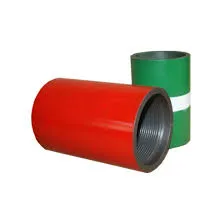- Afrikaans
- Albanian
- Amharic
- Arabic
- Armenian
- Azerbaijani
- Basque
- Belarusian
- Bengali
- Bosnian
- Bulgarian
- Catalan
- Cebuano
- Corsican
- Croatian
- Czech
- Danish
- Dutch
- English
- Esperanto
- Estonian
- Finnish
- French
- Frisian
- Galician
- Georgian
- German
- Greek
- Gujarati
- Haitian Creole
- hausa
- hawaiian
- Hebrew
- Hindi
- Miao
- Hungarian
- Icelandic
- igbo
- Indonesian
- irish
- Italian
- Japanese
- Javanese
- Kannada
- kazakh
- Khmer
- Rwandese
- Korean
- Kurdish
- Kyrgyz
- Lao
- Latin
- Latvian
- Lithuanian
- Luxembourgish
- Macedonian
- Malgashi
- Malay
- Malayalam
- Maltese
- Maori
- Marathi
- Mongolian
- Myanmar
- Nepali
- Norwegian
- Norwegian
- Occitan
- Pashto
- Persian
- Polish
- Portuguese
- Punjabi
- Romanian
- Russian
- Samoan
- Scottish Gaelic
- Serbian
- Sesotho
- Shona
- Sindhi
- Sinhala
- Slovak
- Slovenian
- Somali
- Spanish
- Sundanese
- Swahili
- Swedish
- Tagalog
- Tajik
- Tamil
- Tatar
- Telugu
- Thai
- Turkish
- Turkmen
- Ukrainian
- Urdu
- Uighur
- Uzbek
- Vietnamese
- Welsh
- Bantu
- Yiddish
- Yoruba
- Zulu
Understanding API Casing Sizes for Improved Oil and Gas Industry Standards and Practices
Understanding API Casing Sizes A Comprehensive Overview
In the world of oil and gas exploration and production, the significance of API casing sizes cannot be overstated. The American Petroleum Institute (API) has established standardized specifications for casing sizes, diameters, and wall thicknesses to ensure safety, reliability, and efficiency in drilling operations. Understanding these specifications is vital for engineers, operators, and other stakeholders involved in the drilling process.
API casing refers to the steel pipe used to line the borehole after drilling, providing structural integrity, preventing collapses, and protecting groundwater from contamination. The size of the casing is critical, as it must be chosen according to the specific conditions of the drilling project, including the type of well, the geological formation, and the depths involved.
Standard Sizes and Dimensions
API casing is categorized into various sizes measured in inches, with the most common sizes ranging from 4.5 inches to 20 inches in diameter. Each size is accompanied by a specific weight measured in pounds per foot (ppf), which influences the casing's ability to withstand external pressure and internal stresses during drilling and production.
Casing sizes are not merely arbitrary numbers; they are carefully chosen based on the well's anticipated conditions. For example, in shallow wells, smaller casings may be sufficient, while deeper wells or those in more unstable formations will require larger, heavier casings to ensure stability and safety.
Types of API Casing
There are several types of API casing, each serving distinct purposes throughout the drilling process
1. Surface Casing Used to protect freshwater aquifers and secure the first stage of the well, surface casing is typically set at a shallower depth. It acts as a barrier to prevent oil, gas, or drilling fluids from contaminating groundwater.
api casing sizes

2. Intermediate Casing This type is set at depths greater than the surface casing and helps to stabilize the wellbore while preventing fluids from leaking into the surrounding formations.
3. Production Casing Installed after the well has been drilled to the target depth, this casing is essential for production operations, as it houses the production tubing and facilitates the extraction of oil and gas.
4. Liner and Tie-Back Casing Liners are used in highly deviated wells and can be run to a specific depth, while tie-backs extend from intermediate casing to the surface, thus enhancing the well's structural integrity.
Importance of Proper Selection
Choosing the right API casing size is crucial for mitigating risks and ensuring the longevity of the well. Improper sizing can lead to various issues, including wellbore instability, casing failures, and in severe cases, blowouts. Engineers must consider factors such as pressure, temperature, and the potential for corrosion when selecting casing sizes.
Moreover, adherence to API specifications is not only a matter of operational efficiency but also of regulatory compliance. Many regions require drilling operations to follow API standards to ensure the environmental protection and safety of drilling activities.
Conclusion
API casing sizes play a pivotal role in the success of drilling operations within the oil and gas industry. With a variety of sizes and types available to accommodate different geological and operational conditions, understanding these specifications is key to achieving safe and effective drilling practices. As technology continues to evolve and more complex reservoirs are explored, the importance of API casing in ensuring operational integrity and environmental protection will remain paramount. Familiarity with API casing sizes helps professionals make informed decisions that ultimately contribute to the sustainable and responsible development of hydrocarbon resources.
-
Tubing Pup Joints: Essential Components for Oil and Gas OperationsNewsJul.10,2025
-
Pup Joints: Essential Components for Reliable Drilling OperationsNewsJul.10,2025
-
Pipe Couplings: Connecting Your World EfficientlyNewsJul.10,2025
-
Mastering Oilfield Operations with Quality Tubing and CasingNewsJul.10,2025
-
High-Quality Casing Couplings for Every NeedNewsJul.10,2025
-
Boost Your Drilling Efficiency with Premium Crossover Tools & Seating NipplesNewsJul.10,2025







